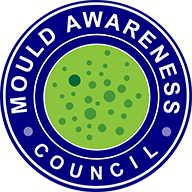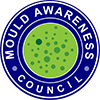Historically, the adverse health effects from prolonged mould exposure have been largely under-recognised by many in mainstream medicine. Only three mechanisms of illness were generally accepted by most medical professionals: allergy, infection, and (in extreme cases) toxicity.
However, the US National Institutes of Health (NIH) have recently recognised additional health effects that can occur from prolonged mould exposure. To cite the NIH:
- Cognitive issues— Extended exposure to mo[u]ld has been linked to short-term memory loss, lightheadedness, dizziness, blurred vision, ringing in the ears, and loss of cognitive functions, also known as “brain fog.”
- Immune effects— Long-term exposure to inhaled mycotoxins may promote inflammation and immune system changes.
- Mental health issues— Studies have associated prolonged mo[u]ld exposure with increased levels or depression, anxiety, and stress in both children and adults.
Recent research suggests a fourth mechanism that might explain much of this broader range of adverse health effects seen in occupants of damp and mouldy buildings: innate immune activation. In damp and humid the buildings, excess moisture leads to certain species of moulds and other microbes proliferating; moreover, only when moulds proliferate in damp environments do they tend to produce mycotoxins. As a result, individuals living or working in damp and mouldy buildings are inhaling both toxic and non-toxic microbial components, such as fungal fragments and mycotoxins. This prompts the body’s first responders from the innate immune system to prompt a response, which can with extended exposure can lead to a chronic, dysregulated inflammatory response—but perhaps only in predisposed or susceptible individuals.
The growing mental health epidemic in our society has led to one-in-seven Australians taking an antidepressant. As 26% of Australian homes are impacted by dampness, could recognising the effects of the home microbiome on our mental health lead to a happier, healthier society?
A combined effort from government, regulators, and industry is needed to improve standards for the construction and maintenance of healthier homes, schools, and workplaces. Further research is also desperately needed to provide better diagnostics that can enable the medical profession to recognise individuals whose health (and happiness) is already compromised by chronic mould exposure.

